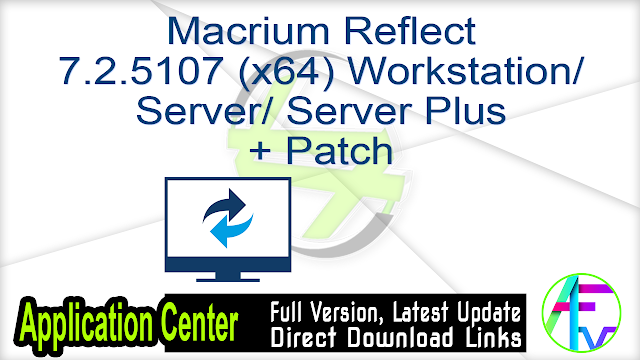

- #Macrium reflect 7 to 10 upgrade how to#
- #Macrium reflect 7 to 10 upgrade update#
- #Macrium reflect 7 to 10 upgrade upgrade#

In addition, Windows Recovery partition contents can be customized on a per-PC basis, so even a given WinRE version isn't always a consistent starting point. That actually happened with the initial release of Windows 10 1809, although it was fixed after that release was recalled and redeployed later.
#Macrium reflect 7 to 10 upgrade update#
The downside of WinRE is that on a Windows 10 system, it keeps evolving as you update to new releases of Windows 10, which means that if Microsoft releases a WinRE version that contains a bug, it might break Rescue Media built on top of it. The benefits of using WinRE are that you can use WiFi in Rescue and you don't have to download a WinPE package from Microsoft, but most people don't need WiFi in Rescue and aren't so short on storage that downloading a WinPE package is a problem. I generally recommend using the newest WinPE version available regardless of what Windows version you're using unless you find that a newer version doesn't actually work on your PC. If you're using a WinPE version as your Base WIM, then Windows 7 and Windows 10 can both build Rescue Media using any Windows PE version from 3.1 (Win7 kernel) to 10 (Win10 kernel).
#Macrium reflect 7 to 10 upgrade upgrade#
If your current Rescue Media is built on WinRE, then it's using the files from your Windows Recovery partition as its "baseline", and therefore that baseline will change when you upgrade from Windows 7 to Windows 10 because that upgrade will change the Windows Recovery partition as well. You can check your Base WIM by opening Rescue Media Builder and clicking Advanced > Choose Base WIM. And depending on which Base WIM you're using for Rescue Media, it's possible that Rescue Media created on Windows 10 won't be any different anyway. Any working Rescue Media you have now will continue working after the upgrade because Rescue Media, by design and necessity, has no dependency on the host system's OS after it's been created. In terms of creating new Rescue Media afterward, you can, but it's not essential. All of your backups will definitely still work after reinstalling, but to protect against the in-place upgrade itself going bad, absolutely make sure your Rescue Media works, including being able to access your backups and see your hard drive(s) before you uninstall Reflect and perform that Windows upgrade - and make sure it's "external" Rescue Media on a CD/DVD or flash drive, NOT just the recovery boot menu option that relies on files that reside on the internal hard drive. If you didn't remove your license info, then it will be automatically picked up during reinstallation.
#Macrium reflect 7 to 10 upgrade how to#
In terms of how to get it reinstalled, this KB article covers that, including a link to the Reflect Download Agent, which will in turn download Reflect itself. You don't need to remove your license before uninstalling if you'll be reinstalling Reflect anyway later, so skip that. The default behavior of the uninstaller is to PRESERVE your settings, scheduled tasks, logs, etc., so it's pretty painless to reinstall later. I don't know if uninstalling Reflect is required for an in-place upgrade, but if you've got components like CBT and Macrium Image Guardian installed, both of which involve low-level drivers, I would probably uninstall Reflect first just to be safe.


 0 kommentar(er)
0 kommentar(er)
